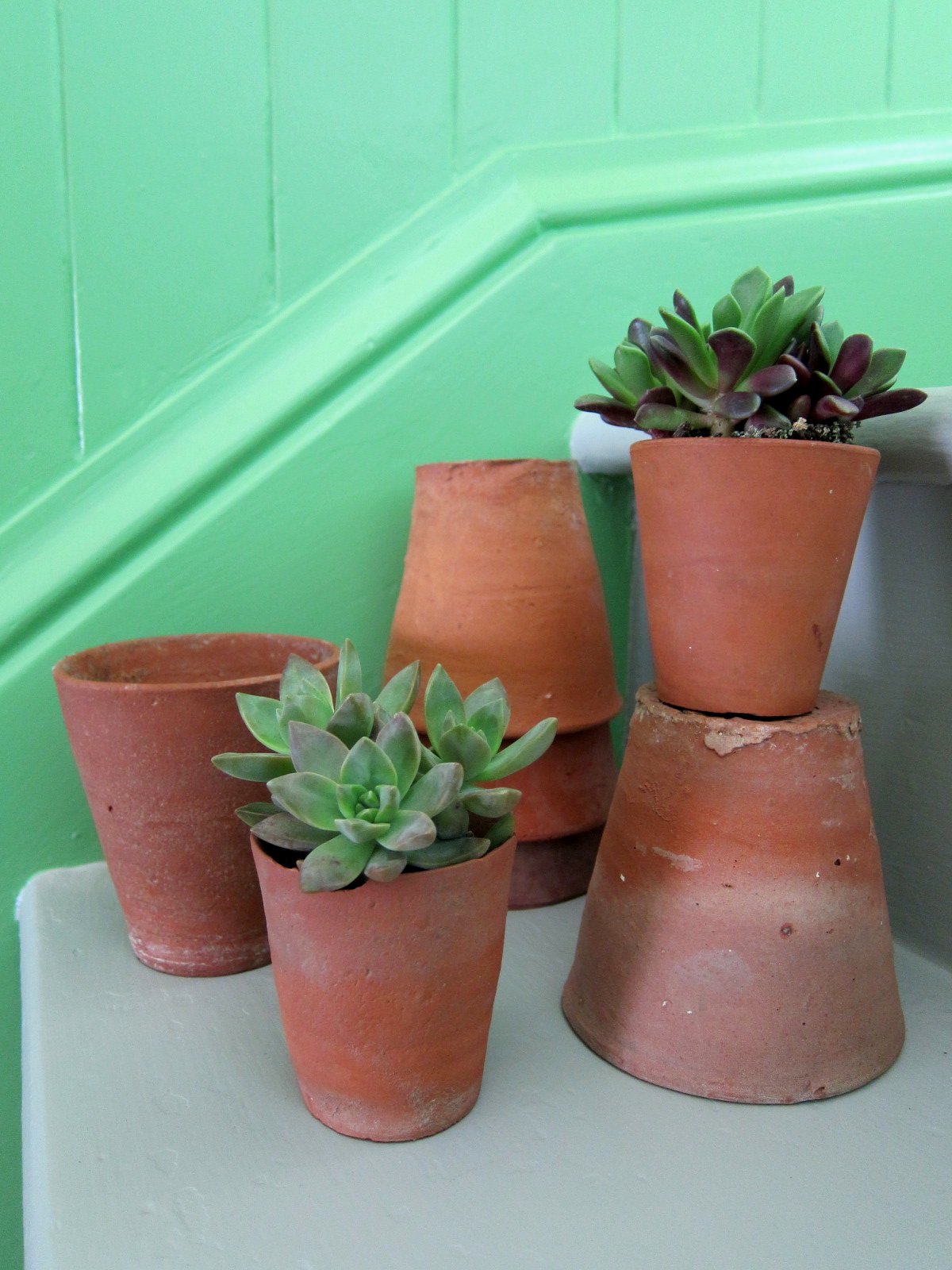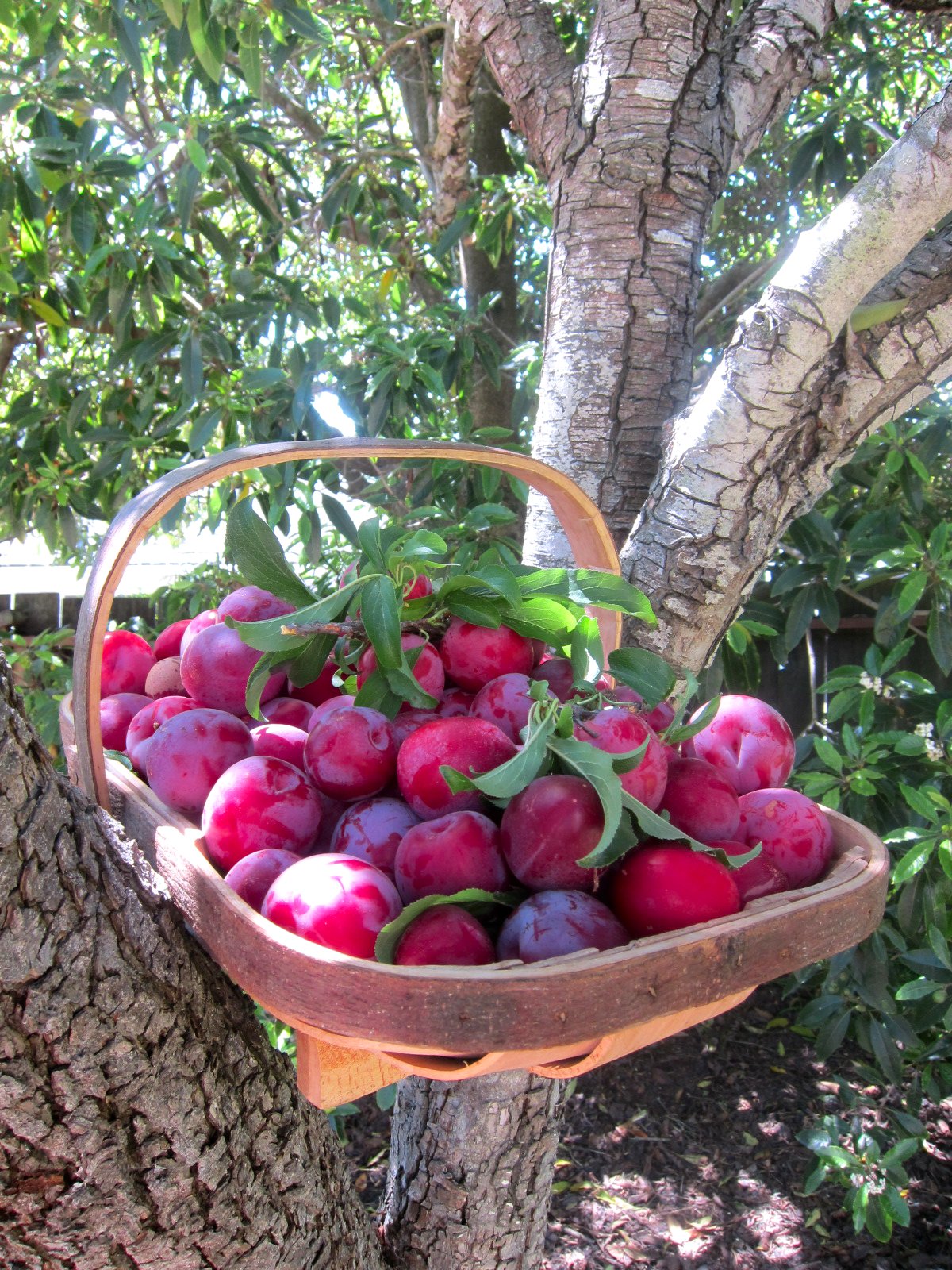An overly filled trug of juicy Santa Rosa plums resting in the crook of a neighboring pear tree
Photo: Chronica Domus
Back in March, I published a
post highlighting the variety of white blooms in my garden. At the time our Santa Rosa plum tree was full of blossom and I was excited at the prospect of savoring the juicy fruits that were to come later in the year.
Plum blossoms as photographed earlier this year
Photo: Chronica Domus
I had no idea that this would be one of those flush years which had every branch laden with fruit. In fact, by the time the first succulent plums were ready to be picked and devoured, the branches would be positively groaning, having been dragged to the ground begging to be relieved of their heavy load.
I was happy to oblige my dear old tree and so on June 11, I began to pick as much of the ripened fruit as I could gather within arms reach. As you will have noticed from viewing the leading photograph in this posting, it was a bonanza to be reckoned with. What I've managed to pick thus far is not even close to the lion's share of the harvest. Basket loads of plums still remain on our lone tree. Some are much higher up and require a ladder to reach, others have yet to ripen. To say I was euphoric at this exceptional bounty is an understatement. My daughter, I think, is the most excited for she has not stopped guzzling down the fruits, despite my protestations of a ruined appetite for a dinner that surely will go untouched.

Unripened plums in shades of rosy pink, apricot and chartreuse covered in their wax bloom
Photo: Chronica Domus
Introduced in 1906 by Luther Burbank, a prolific American botanist and agricultural scientist, the Los Angeles Times wrote of Prunus salicina "Santa Rosa" that it is "the gold standard of farmers' market plum flavor". If you are as fortunate as I to taste these delicious fruits, you too will agree they are indeed a winner. I have yet to stumble across a plum to equal the sweetness and juiciness of these little gems, which is probably the reason I have practically given up on eating the dry mealy rock-hard plums available for sale at most supermarkets in our area. Believe it or not, even with their known superior flavor, Santa Rosa plums are not a commercial favorite with growers. The variety's susceptibility to disease may have something to do with this sad reality. Where you will find these fruits for sale is at the numerous farmers' markets during stone fruit season, which is in full swing during the months of June and July in the Bay Area.

The plums are deepening in color as they mature
Photo: Chronica Domus
This branch holds three plums in various stages of ripening
Photo: Chronica Domus
As the fruits develop on the branch, they are covered by a natural white coating called a wax bloom, which makes their ripening hues appear muted when compared to their final jewel-like color. I particularly enjoy viewing the spectrum of colors to be found on any given branch. Beautiful shades of vivid chartreuse, apricot, rosy pink, salmon, and the deepest claret red can be spied co-mingling and dangling temptingly like precious stones. Surely, Monet and the great painters of the world would be moved by such a painterly palette put forth by Mother Nature.
A rainbow of plums beginning to weigh down the boughs of our tree
Photo: Chronica Domus
A week later, the plums are ready to be picked as boughs are dragged to the ground
Photo: Chronica Domus
Batches of plums have been dispatched to good friends and neighbors, which is all part of the excitement of growing our fruit. I have filled compotes and bowls and placed them in the dining room and in the kitchen. The house is filled with their pleasing fragrance which one cannot fail but notice upon entering and being greeted by the heady fruity fragrance. It is just heavenly!
Wiped of their wax bloom and ripened to the deepest shade of ruby claret
Photo: Chronica Domus
A cross section of a juicy Santa Rosa plum showing its deep claret color
Photo: Chronica Domus
Not only do we eat our plums, we like to bake with them too. A simple rustic plum pie is a tasty and practical way of using the over-ripe plums that have sat around in bowls and have continued to ripen. I've already made two this week.
Our rustic plum pie ready for the oven
Photo: Chronica Domus
Our hungry lunch or dinner guests always appreciate a home-made pie, especially during plum season. We serve our pie warm with vanilla ice cream, my American husband's preferred method of eating it, or at room temperature with decadent whipped double cream. My daughter prefers to pour cream all over her pie until it pools around it, which is a very British way of approaching things. Nature versus nurture I think. Won't you join us for a slice?
Please do help yourself to plum pie and cream
Photo: Chronica Domus
Do you enjoy eating or cooking with plums when in season, or do you have another favorite stone fruit you look forward to eating when at its seasonal peak?
















